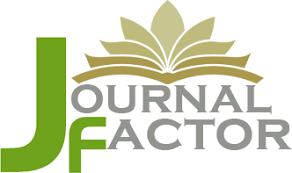The effect of serum on mPr3 and CD177 expression on neutrophils
DOI:
https://doi.org/10.54361/Keywords:
Proteinase 3, CD177, neutrophils, ANCA-associated vasculitisAbstract
Proteinase 3 (Pr3) is a serine protease that is stored primarily in azurophilic granules and secretory vesicles in neutrophils. The high affinity Pr3 receptor, CD177, is expressed on a subset of neutrophils (ranging from 0-100%), but usually only half of the circulating neutrophils express CD177 in most normal individuals. As a serine proteinase, Pr3 is controlled by a variety of inhibitors, including alpha-1-antitripsin (AAT). We investigated if the surface expression of Pr3 and CD177 was affected by stimulation of neutrophils in the presence or absence of serum. Methods: Neutrophil cells were isolated from healthy donors. The cells counted and stimulated with fMLP only or cytochalasin B followed by addition of fMLP, and compared to unstimulated controls, in the presence or absence of 100 % autologous serum. The expression of Pr3 and CD177 was analysed by flow cytometery. Results: The expression of membrane bound Pr3 (mPr3) by neutrophils was still detectable in the presence of serum however, the expression was reduced on both mPr3low and mPr3high cells in comparison to cells incubated in the absence of serum. No significant increase was observed in mPr3 expression following stimulation with fMLP in either the presence or absence of serum. In comparison, stimulation with cytochalasin B combined with fMLP resulted in a 9-fold increase (P<0.0001) in the Pr3high cells compared with unstimulated cells in the absence of serum. This increase was only 3-fold (P< 0.002) in the presence of serum. Conclusion: Despite the ability of purified AAT to inhibit Pr3 binding to CD177, significant surface Pr3 was still found on the surface of CD177-positive neutrophils when stimulated in the presence of 100% autologous serum, but only following maximal stimulation of neutrophils.
Downloads
References
Van der Geld YM, Limburg PC, Kallenberg CG (2001). Proteinase 3, Wegener’s autoantigen: from gene to antigen. J Leuk Biol. 69:177-90.
Bories D, Raynal MC, Solomon DH, Darzynkiewicz Z, Cayre YE (1989). Down-regulation of a serine protease, myeloblastin, causes growth arrest and differentiation of promyelocytic leukemia cells. Cell 59: 959-68.
Labbaye C, Musette P, Cayre YE (1991). Wegener autoantigen and myeloblastin are encoded by a single mRNA. Proc Natl Acad Sci USA 88: 9253-6.
Witko-Sarsat V, Cramer EM, Hieblot C, Guichard J, Nusbaum P, Lopez S, Lesavre P, Halbwachs-Mecarelli L.(1999). Presence of proteinase 3 in secretory vesicles: evidence of a novel, highly mobilizable intracellular pool distinct from azurophil granules. Blood 94: 2487–96.
Goldmann WH, Niles JL, Arnaout MA (1999). Interaction of purified human proteinase 3 (PR3) with reconstituted lipid bilayers. Eur J Biochem. 261: 155-62.
Fregonese L, Stolk J (2008). Hereditary alpha-1-antitrypsin deficiency and its clinical consequences. Orphanet J Rare Dis. 3:16.
Muller Kobold AC, Kallenberg CG, Tervaert JW (1998). Leucocyte membrane expression of proteinase 3 correlates with disease activity in patients with Wegener's granulomatosis. Br J Rheumatol. 37: 901- 7
Rooney CP, Taggart C, Coakley R, McElvaney NG, O'Neill SJ (2001). Anti-proteinase 3 antibody activation of neutrophils can be inhibited by alpha1-antitrypsin. Am J Respir Cell Mol Biol. 24: 747-54.
Korkmaz B, Kuhl A, Bayat B, Santoso S, Jenne DE (2008). A hydrophobic patch on proteinase 3, the target of autoantibodies in Wegener granulomatosis, mediates membrane binding via NB1 receptors. J Biol Chem. 283: 35976-82.
Korkmaz B., Attucci S., Jourdan M. L., Juliano L., Gauthier F (2005). Inhibition of neutrophil elastase by alpha1-protease inhibitor at the surface of human polymorphonuclear neutrophils. J Immunol. 175: 3329–38
Attucci S., Gauthier A., Korkmaz B., Delépine P., Martino M. F., Saudubray F., Diot P., Gauthier F (2006). EPI-hNE4, a proteolysis-resistant inhibitor of human neutrophil elastase and potential anti-inflammatory drug for treating cystic fibrosis. J Pharmacol. Exp Ther. 318: 803–809
Korkmaz B, Jaillet J, Jourdan ML, Gauthier A, Gauthier F, Attucci S (2009). Catalytic activity and inhibition of wegener antigen proteinase 3 on the cell surface of human polymorphonuclear neutrophils. J Biol Chem. 284: 19896-902.
Bauer S, Abdgawad M, Gunnarsson L, Segelmark M, Tapper H, Hellmark T (2007). Proteinase 3 and CD177 are expressed on the plasma membrane of the same subset of neutrophils. J Leukoc Biol. 81: 458-64.
Brachemi S, Mambole A, Fakhouri F, Mouthon L, Guillevin L, Lesavre P, Halbwachs- Mecarelli L (2007). Increased membrane expression of proteinase 3 during neutrophil adhesion in the presence of antiproteinase 3 antibodies. J Am Soc Nephrol. 18: 2330-9.
von Vietinghoff S, Tunnemann G, Eulenberg C, Wellner M, Cristina Cardoso M, Luft FC, Kettritz R (2007). NB1 mediates surface expression of the ANCA antigen proteinase 3 on human neutrophils. Blood 109: 4487-93.
Hu N, Westra J, Kallenberg CG (2009). Membrane-bound proteinase 3 and its receptors: relevance for the pathogenesis of Wegener's Granulomatosis. Autoimmun Rev. 8: 510-4.
Halbwachs-Mecarelli L, Bessou G, Lesavre P, Lopez S, Witko-Sarsat V (1995). Bimodal distribution of proteinase 3 (PR3) surface expression reflects a constitutive heterogeneity in the polymorphonuclear neutrophil pool. FEBS Lett. 374: 29–33.
Schreiber A, Busjahn A, Luft FC, Kettritz R (2003). Membrane expression of proteinase 3 is genetically determined. J Am Soc Nephrol. 14: 68–75.
Yang JJ, Tuttle RH, Hogan SL, Taylor JG, Phillips BD, Falk RJ, Jennette JC (2000) Target antigens for anti-neutrophil cytoplasmic autoantibodies (ANCA) are on the surface of primed and apoptotic but notunstimulated neutrophils. Clin Exp Immunol. 121: 165–72.
Csernok E, Ernst M, Schmitt W, Bainton DF, Gross WL (1994). Activated neutrophils express proteinase 3 on their plasma membrane in vitro and in vivo. Clin Exp Immunol. 95: 244-50.
Hellmich B, Csernok E, Trabandt A, Gross WL, Ernst M (2000). Granulocyte- macrophage colonystimulating factor (GM-CSF) but not granulocyte colony-stimulating factor (G-CSF) induces plasma membrane expression of proteinase 3 (PR3) on neutrophils in vitro. Clin Exp Immunol. 120: 392-8.
Drewniak A, Boelens JJ, Vrielink H, Tool AT, Bruin MC, van den Heuvel-Eibrink M, Ball L, van de Wetering MD, Roos D, Kuijpers TW (2008). Granulocyte concentrates: prolonged functional capacity during storage in the presence of phenotypic changes. Haematologica 93: 1058-67.
Goldschmeding R, van Dalen CM, Faber N, Calafat J, Huizinga TWJ, van der Schoot CE, Clement LT, von dem Borne AEG Kr (1992). Further characterization of the NB1 antigen as a variably expressed 56–62 kD GPI linked glycoprotein of plasma membranes and specific granules of neutrophils. Br J Haematol. 81: 336-45.
Witko-Sarsat V, Reuter N, Mouthon L (2010). Interaction of proteinase 3 with its associated partners: implications in the pathogenesis of Wegener's granulomatosis. Curr Opin Rheumatol. 22: 1-7.
Choi M, Eulenberg C, Rolle S, von Kries JP, Luft FC, Kettritz R (2010). The use of small molecule high-throughput screening to identify inhibitors of the proteinase 3-NB1 interaction. Clin Exp Immunol. 161: 389-96.
Downloads
Published
Issue
Section
License
Copyright (c) 2017 Amina Bshaena, Salima Abdulla, Brad Spiller (Author)

This work is licensed under a Creative Commons Attribution-NonCommercial-NoDerivatives 4.0 International License.
Open Access Policy
Libyan journal of medical Research (LJMR).is an open journal, therefore there are no fees required for downloading any publication from the journal website by authors, readers, and institution.
The journal applies the license of CC BY (a Creative Commons Attribution 4.0 International license). This license allows authors to keep ownership f the copyright of their papers. But this license permits any user to download , print out, extract, reuse, archive, and distribute the article, so long as appropriate credit is given to the authors and the source of the work.
The license ensures that the article will be available as widely as possible and that the article can be included in any scientific archive.
Editorial Policy
The publication of an article in a peer reviewed journal is an essential model for Libyan journal of medical Research (LJMR). It is necessary to agree upon standards of expected ethical behavior for all parties involved in the act of publishing: the author, the journal editorial, the peer reviewer and the publisher.
Any manuscript or substantial parts of it, submitted to the journal must not be under consideration by any other journal. In general, the manuscript should not have already been published in any journal or other citable form, although it may have been deposited on a preprint server. Authors are required to ensure that no material submitted as part of a manuscript infringes existing copyrights, or the rights of a third party.
Authorship Policy
The manuscript authorship should be limited to those who have made a significant contribution and intellectual input to the research submitted to the journal, including design, performance, interpretation of the reported study, and writing the manuscript. All those who have made significant contributions should be listed as co-authors.
Others who have participated in certain substantive aspects of the manuscript but without intellectual input should only be recognized in the acknowledgements section of the manuscript. Also, one of the authors should be selected as the corresponding author to communicate with the journal and approve the final version of the manuscript for publication in the LJMR.
Peer-review Policy
- All the manuscripts submitted to LJMR will be subjected to the double-blinded peer-review process;
- The manuscript will be reviewed by two suitable experts in the respective subject area.
- Reports of all the reviewers will be considered while deciding on acceptance/revision or rejection of a manuscript.
- Editor-In-Chief will make the final decision, based on the reviewer’s comments.
- Editor-In-Chief can ask one or more advisory board members for their suggestions upon a manuscript, before making the final decision.
- Associate editor and review editors provide administrative support to maintain the integrity of the peer-review process.
- In case, authors challenge the editor’s negative decision with suitable arguments, the manuscript can be sent to one more reviewer and the final decision will be made based upon his recommendations.










